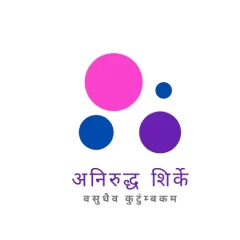Myanmar, a country with a rich cultural heritage and diverse landscapes, has been rapidly evolving in recent years, particularly in the realm of technology and connectivity. The digital landscape in Myanmar has undergone significant changes, with the adoption of mobile technology and the internet becoming more widespread. However, challenges remain, especially in remote areas where access to technology and digital literacy are limited. This article explores Advancing digital landscape through innovative Technology and Connectivity in Myanmar. Public-private partnerships (PPP) will be key to enhance education, communication, and economic opportunities in Myanmar.
Technology and Connectivity in Myanmar

The Digital Divide in Myanmar
Myanmar’s digital divide is stark, with urban areas enjoying more comprehensive access to technology and the internet compared to rural and remote regions. According to the World Bank, in 2020, only about 16% of the population had access to the internet, with mobile phone penetration being much higher at around 40%. This gap in connectivity has significant implications for education, communication, and economic development.
Enhancing Education Through Connectivity
Improved access to technology and the internet can revolutionise education in Myanmar. With the integration of digital tools and online resources, students in even the most remote areas can access high-quality educational content. E-learning platforms, video lectures, and interactive apps can bridge the educational gap between urban and rural areas, providing equal opportunities for all students to access knowledge and skills. Moreover, remote learning can help Myanmar respond to crises like the COVID-19 pandemic by ensuring continuous access to education.
Communication and Social Connectivity
Digital connectivity not only improves educational opportunities but also enhances communication and social connectivity. In a country as diverse as Myanmar, digital platforms can facilitate communication between different ethnic groups and regions. Social media and instant messaging apps can promote dialogue, understanding, and collaboration among Myanmar’s citizens, ultimately fostering a more united and connected nation. Moreover, improved connectivity can strengthen disaster preparedness and response, allowing for quicker dissemination of information and coordination of relief efforts during crises.
Economic Opportunities and GDP Growth
Enhancing digital literacy and access to technology can also have a profound impact on Myanmar’s economic development. By connecting remote areas to the digital economy, individuals and communities can tap into new economic opportunities. For example, farmers can access weather information and market prices, helping them make more informed decisions and improve agricultural productivity. Small businesses in remote areas can reach a wider customer base through online sales and digital marketing. These initiatives can contribute to inclusive economic growth, reducing poverty, and increasing GDP.
Public-Private Partnerships (PPPs) for Digital Transformation
To address the digital divide effectively, Myanmar should leverage public-private partnerships (PPPs). These collaborations can bring together the government, private sector, and civil society to pool resources, expertise, and technology. PPPs can facilitate the development of digital infrastructure, the creation of educational content, and the provision of affordable internet services in remote areas. By sharing the responsibility, risks, and rewards, PPPs can ensure sustainable and equitable digital development.
Conclusion
Myanmar stands on the cusp of a digital transformation that can reshape its educational, social, and economic landscape. By improving digital literacy and access to technology, especially in remote areas, the country can unlock a world of opportunities. The Government, in collaboration with the private sector and civil society, must prioritize the development of digital infrastructure, educational resources, and affordable internet services through PPPs. In doing so, Myanmar can bridge the digital divide, enhance education, communication, and economic opportunities, and contribute to its long-term economic growth and development. A digitally connected Myanmar is not only beneficial for its citizens but also for the Global community, as it fosters a more inclusive and interconnected world.
